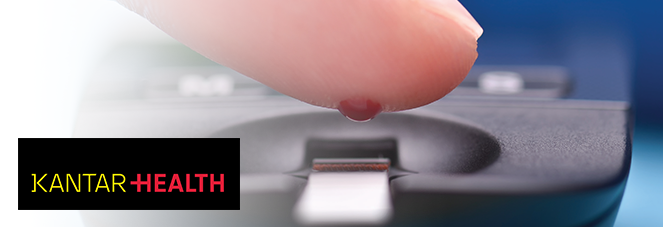Diabetes Trends in the U.S.
February 16, 2015
Diabetes is one of the most prevalent, costly, and burdensome diseases in the world, affecting 382 million people worldwide in 2013. What does the typical demographic patient profile look like? And how has treatment changed over the past few years? We summarize the findings from a recently released white paper from Kantar Health on Diabetes Trends in the U.S.: Results from the National Health and Wellness Survey.
Interested in this white paper? Email undine@scientist.com
Using data derived from Kantar Health’s National Health and Wellness Survey (NHWS), the largest global self-reported general population survey in the healthcare industry, the demographic characteristics and treatment patterns of type 2 diabetes (T2D) patients were examined to derive insights into this critically important disease state.
The NHWS results found that the overall prevalence of diagnosed T2D was 10% (~22.6 million adults), with an additional 9.6% at risk (defined as having been told by a physician that they are at risk for developing diabetes, have high blood sugar, or have signs of early diabetes). Comparisons of this figure with other established sources such as the American Diabetes Association are available in the white paper.
The annual survey found that more patients are being treated with medication (up 2%), and insulin use is more common (up 6%) (Figure 1).
FIGURE 1: TREATMENT RATES OF U.S. ADULTS WITH TYPE 2 DIABETES (2006 – 2013)

How can patients be more involved in their care? This white paper provides insights into patients’ knowledge of glycated hemoglobin levels (HbA1c), with substantial improvement over the past several years. NHWS found that 56% of patients were aware of their HbA1c levels, up twofold from 2006. The white paper further details how HbA1c level knowledge varies by other demographic factors such as race, with Hispanics making the most gains in knowledge.
As diabetes prevalence is projected to grow in the coming years, the medical and societal cost burdens are expected to increase. NHWS provides critical insight into annual trends in disease prevalence, patient demographics, knowledge of diabetes, and opportunities for improving health outcomes and reducing societal cost burden of diabetes. For deeper insight into Diabetes Trends in the U.S., reach out to undine@scientist.com for this white paper.








